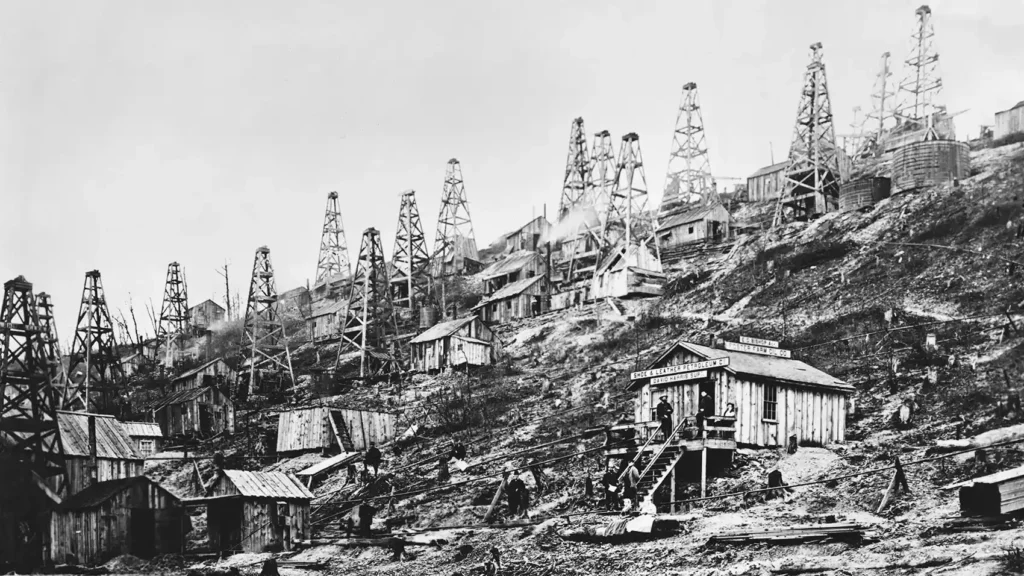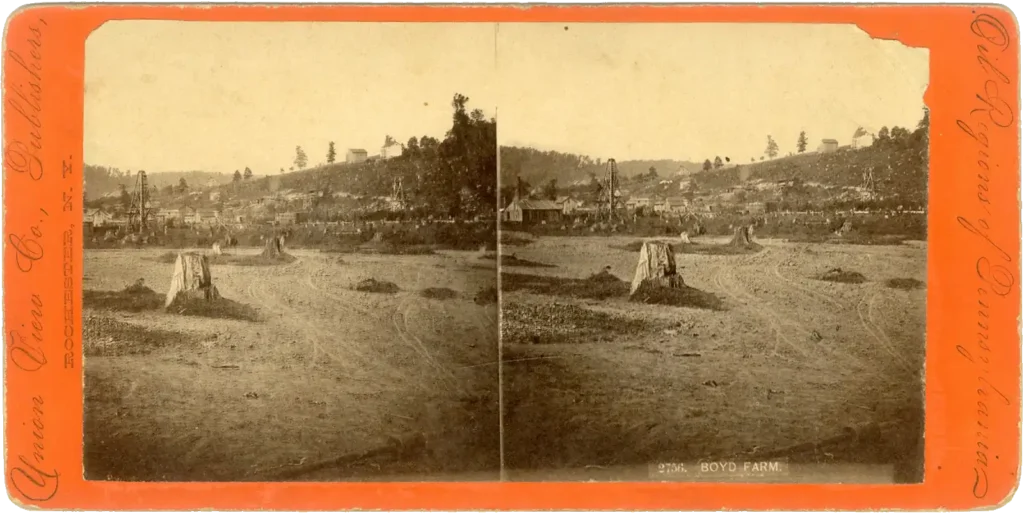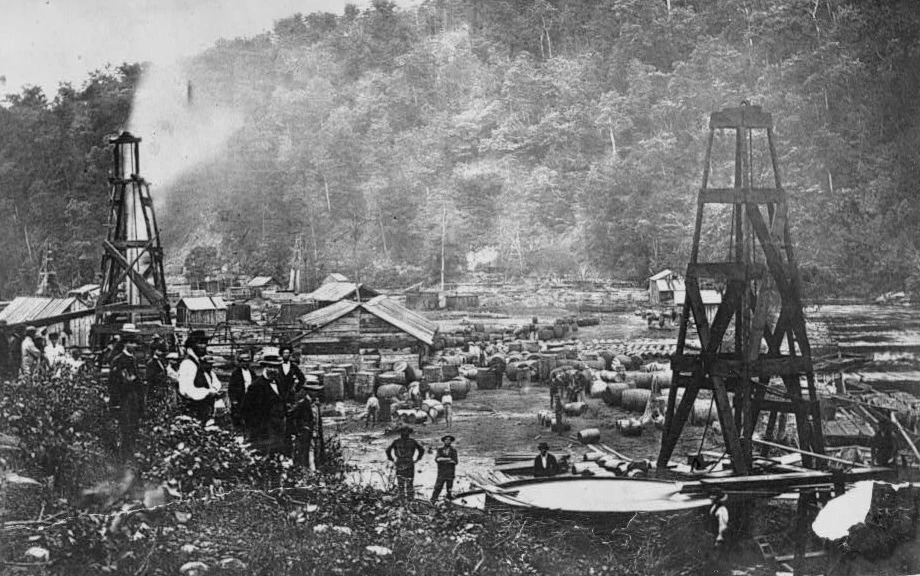[This is the second part of a two-part story — don’t miss Part 1 from earlier this week.]
Our Reporter Rusticates — Letter from J. P.
Morning Herald (Titusville, Pa.), April 13, 1866

Pioneer Run and the Hoskins Well
Descending to the mouth of the run, we recrossed the ferry and found ourselves at the mouth of Pioneer Run. Walking up this run for about half a mile, we came to the largest producing well now in the oil regions, belonging to the Hoskins Oil Company. This well, by actual measurement, is now flowing 600 barrels per day. There are several other wells, the aggregate production of which is 250 barrels per day—making a total of 850 barrels daily for Pioneer Run. This does not include the Champion nor Green Mountain wells at the mouth of the run, which were doing well prior to the recent fire, and which are now being rejuvenated with every promise of success.
McElhenny Farms and Funkville

Leaving Pioneer Run, we came to the upper and lower McElhenny farms, and also Funkville, the total production of which is 200 barrels per day — with the exception of about 30 barrels per day, which are being pumped from small producing wells.
We have now given the product of the whole region extending from Kingsland’s Flats to Petroleum Centre.
A View from the Summit
Ascending the hill between McElhenny and Benninghoff Run, we stopped near the summit, and looking down on the valley below, counted more than one hundred derricks—relics of departed wealth and visionary expectations.
Smoke on the Horizon and a Cold Crossing
Whilst gazing on the scene, our attention was suddenly attracted by a dense column of smoke seen in the distance. We descended the hill at a much greater rate of speed than we ascended, with the intention of proceeding to the scene of conflagration. But after traveling at a 2:40 speed for some distance, we gave it up as a bad job and retraced our steps to where the ferry was supposed to be. There not being sufficient water for the boat to cross, we plunged in and waded to the other side of the stream. Being but one foot deep, we found no difficulty in crossing — though not dry shod.
Return to Boyd Farm

This brought us to the Boyd Farm, on the lower part of which is the terminus of the Oil Creek Railroad, and also the hotel from which we indite this. A good supper and a good bed winds up the day’s labor, and we bid the reader good night.
— J. P.
